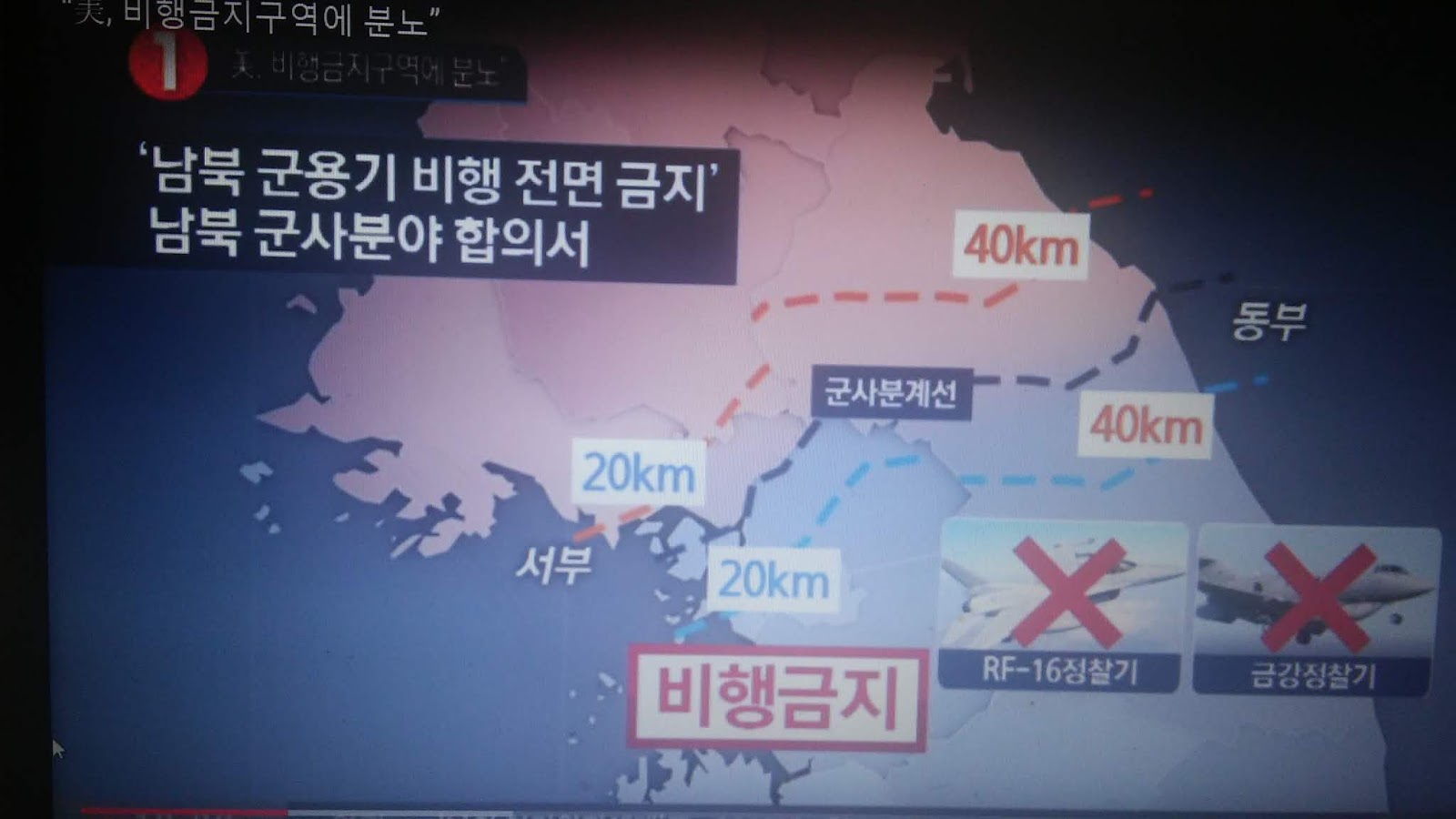Military Flight Restrictions Agreement Between Koreas Irks US
Last edited Sun Oct 14, 2018, 10:37 AM - Edit history (1)
There have been a number of reports in the press since the Moon-Kim Summit in Pyongyang on September 19, about US dissatisfaction with the military agreements made between North and South Korea affecting military operations and disposition of forces along the DMZ/Military Demarcation Line, and Northern Limit Lines in the East and West Seas surrounding the Korean peninsula.
The first sign was at General Abrams' (next USFK/UNC commander) hearing before the Armed Services Committee in which the general asserted the ultimate authority of the United Nations Command to determine the measures in the agreement to which it would accede. More recently there was an article in the Japanese press about a phone call between Mike Pompeo and South Korean Foreign Minister Kang Kyung Hwa in which he expressed anger concerning the restrictions on military aircraft in the area of the DMZ negotiated in the agreement. Following that it became a matter of inquiry in the South Korean National Assembly when Kang was queried on the subject and criticized by opposition party members.
Channel A News Top Ten posted a video on youtube concerning the controversy on October 12. The essence of the matter is that the US complained that it was not given enough time to digest the lengthy military agreement reached by the two sides. The South Korean Defense Ministry has said that the US/UNC military command was consulted many times in the course of the military negotiations with the North, but the US side says the consultation was insufficient, and that last minute details in the agreement were not delivered to the US/UNC side until September 16, clearly an inadequate time to consider such a lengthy agreement agreed to by North and South on September 18. The principle points of contention are related to the restrictions on military air operations in the vicinity of the DMZ. Although there are some other differences out there, this report is limited to the air operations issue.

Source Channel A News Top Ten Youtube podcast 10.12
There appear to be two principal restricted zones along the DMZ/MDL extended on both sides north and south. The inner zone is depicted in the Channel A News Top Ten report as a ten kilometer band on either side of the DMZ/MDL affecting rotor powered flight. This naturally affects military helicopter operations and was reported to affect prop aircraft, such as the RC-12, and RC-7, military intelligence and surveillance aircraft used by US and ROK forces respectively. The primary criticism among military analysts in South Korea was that not only combat helicopter flights were affected but also military evacuation flights for injured or sick US troops. Such medical evacuation flights from Camp Boniface, for example, "would require North Korean permission." Additionally, it was felt that the inability to operate lighter reconnaissance aircraft in this zone would create potential weaknesses or gaps in readiness and responsiveness to potential aggression from North Korean forces. The freedom of high level military commanders to check their area of responsibility and inspect force dispositions by air was felt to be another potential impediment.

Source Channel A News Top Ten Youtube podcast 10.12
The second wider region of restrictions on military aircraft operations affects jet aircraft. In the eastern half of the zone, the restricted airspace extends 40 kilometers on either side of the DMZ/MDL. On the western side of the peninsula, the zone extends 20 km north and south of the MDL. The graphic depicts the affected aircraft of concern, the reconnaissance aircraft, the RF-16, and the ROKAF Gumgang. Other military jet aircraft are prohibited from the zone as well, these were the aircraft used to demonstrate the primary concern of military analysts and ostensibly, represent the primary US objection to the restrictions.
Military representatives for the South have contended that because the agreement doesn't go into effect until Nov. 1, and also because it is understood that the US/UNC would need to agree with the provisions of the military agreement signed at Pyongyang in September, that the differences can be worked out. They emphasized that the US/UNC side expressed agreement with most items in the agreement. Critics argue that such backtracking and re-negotiations could provide an unnecessarily troublesome and problematic obstacle diplomatically.